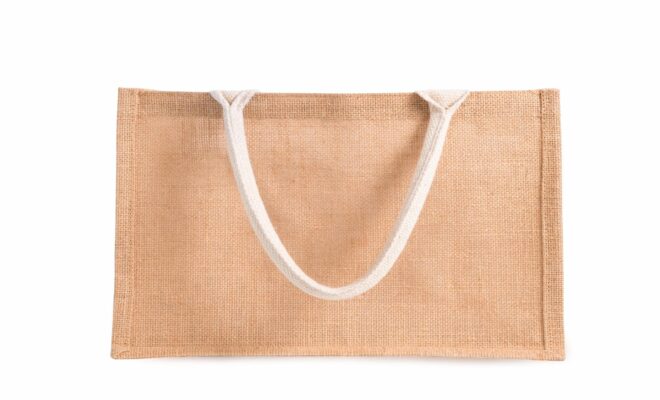How Does Aerosóis Work?
You may have heard the word “aerosóis” used to talk about pollution or climate change. But what are they really?aerosóis have a big effect on both people and the world because they are particles in the air. Microparticles or drops of liquid that stay in the air for at least a few seconds are called aerosols. Aerosols are naturally made by things like sea spray, wildfires, and volcanic eruptions. However, over the past hundred years, human activities have greatly raised the amount of aerosols in the atmosphere.aerosóis has many effects, such as changing the weather by reacting with sunlight and clouds and putting people’s health at risk by going deep into the lungs.aerosóis is important to understand if we want to solve some of the world’s biggest problems. This piece will talk about what aerosols are, where they come from, how they affect the environment, and how scientists study them to learn more about them and find ways to lessen their effects.
The Beginning
Aerosols are made up of very small solid or liquid particles mixed in with a gas, usually air. Because the particles are so small, their main way of moving is by hitting gas molecules, which gives them gas-like qualities. However the way they behave as a group depends on how particles collide with each other, which gives them the qualities of either liquids or solids.
aerosóis have sizes between a few nanometers and 100 micrometres. Because they are so small and light, they stay in the air for a long time. aerosóis are things like smoke, mist, fumes, dust, and sea spray. Volcanic eruptions, dust storms, forest fires, and live plants are some of the natural things that cause aerosóis. Anthropogenic aerosóis are made by things that people do, like burning fossil fuels, making factories release pollution and farming.
aerosóis have big effects on health, the environment, and the weather. They scatter and absorb light, which changes the temperature and radiation balance of the earth. They give chemical processes places to happen and let compounds move between the biosphere and the atmosphere. Aerosols are also bad for your health when you breathe them in. They can cause lung and heart diseases.
It is very important to understand aerosols and how to lessen their effects if we want to make policies and technologies that will last in the future. Researchers are still looking into their sources, traits, changes, and effects over different time and space scales.
The Story of aerosóis
The aerosol can has a rich past that goes back many years. Aerosol cans were first used to spray poisons and other pesticides when they were invented in Norway in 1927. Over the next few decades, technology slowly got better, which made aerosol cans work with a wider range of goods.
The Boom After World War II
With the end of WWII, more and more spray cans were made and used. Several things caused this boom:
- Better propellants: LPG and butane, which are liquefied petroleum gases, were developed as propellants that made aerosol cans spray goods more evenly and with more force.
- Aluminium cans: Aerosol cans are lighter, cheaper, and easier to make because they are made of aluminium instead of steel.
- Economic growth: North America and Western Europe’s strong economies after the war increased the desire for new consumer goods, such as aerosolized goods.
By the 1950s, many home items, such as air fresheners, deodorants, hair sprays, and cleaning solutions, came in aerosol cans. It was the best time for spray cans, and sales peaked in the 1970s.
Concerns about the environment and health
Fears grew in the 1970s, though, about how chlorofluorocarbons (CFCs) and other aerosol propellants might harm the climate and people’s health. Because of this, more eco-friendly propellants were made, and some uses of CFCs were made illegal. Even with these changes, aerosol cans are still a popular way to quickly and accurately spray a wide range of personal, household, and industrial goods.
How the aerosóis Works
The aerosóis sprays a fine mist or mist of drops into the air to work. The product and a propellant that is under pressure are inside the spray can. An aerosol is made when the nozzle is pressed. The propellant pushes the product up a dip tube and out of the nozzle.
Moving Things
Most of the time, liquid gases like propane, butane, isobutane, or a mix of these gases are used as propellants. When the nozzle is turned on, the propellant turns into vapour, which presses down on the can and pushes the product out. The propellant evaporates totally as it comes out of the can, leaving behind a fine mist of product droplets in the air.
Size of the droplet
A key part of an aerosol product is the size of the droplets. If the drops are too big, they will separate too quickly, and if they are too small, they might stay in the air for too long or be hard to use correctly. The best droplet size relies on the product and how it will be used. Aerosol makers can change the size of droplets by looking at things like
- The gaseous fuel
- The item that is being given out
- Design of nozzle
- Details about valves
Engineers can make an aerosol product with droplets in the right size range for its purpose by handling these factors correctly.
Uses
Aerosol goods are useful in many situations and can be found in:
- Sprays and deodorizers for the air
- Paints and grease
- Bug killers and insecticides
- Hair spray and sunscreen
Aerosol products are widely used in many business and industrial settings because they are convenient and can be used in a lot of different ways. They are useful for many things because they are portable and can quickly and evenly spray goods in a fine mist.
Different kinds of aerosols
A lot of different kinds of aerosol goods are on the market for both home and business use.
Moving Things
What’s inside an aerosol can is pushed out by propellants, which are generally pressurised gases like propane, butane, isobutane, or mixtures of propane and butane. This liquid petroleum gas turns into a gas and builds up pressure, which forces the product’s contents out. Propellants generally don’t have any smell or colour and don’t leave behind any residue.
Cleaners and solvents
A lot of aerosol items have solvents in them, which are liquids that can break down other substances. Acetone, methanol, and toluene are all common solvents. Solvents help spread out the ingredients in a product and move other ingredients that are dissolved or floating around. They quickly disappear, leaving behind the other ingredients in the product. Solvents must be used with the right product so that they don’t hurt any of the ingredients or the spray can.
Systems with propellant and solvent
A mix of propellants and solvents is used in some aerosol products to make the best delivery method. The propellants give the product pressure and force, and the liquids help spread it out. These systems are carefully designed to make sure that the product is spread out, dries, and flows properly without any chemical reactions that could harm the aerosol bottle.
Ingredients that work
The effects of an aerosol product are caused by its specific active ingredients. These are things like chemicals, dyes, lubricants, glues, poisons, scents, and more. In order for the active ingredients to be released on surfaces or into the air, they must be dissolved, mixed, or suspended in the propellant-solvent system. The active ingredients are what make the aerosol product work and what its qualities are.
To get the right results, picking the right mix of propellants, solvents, and active ingredients for an aerosol product takes a lot of research and engineering. Aerosol technology makes it easy to send a wide range of ingredients precisely and conveniently. It can be used in a wide range of consumer, commercial, and industrial settings.
Rubbish and trash
Most of the time, the containers used for aerosols are not recycled and end up in landfills, streams, and as trash. The solvents and propellants they had in them can pollute groundwater and land. Plastic microbeads that are in some aerosol cosmetics are bad for wildlife and the earth.
Weather Changes
Also very strong greenhouse gases that change the temperature are CFCs, HCFCs, and HFCs. When these gases are released into the air, they trap heat and keep the Earth warm. Cutting down on or getting rid of the use of these chemicals in aerosol propellants and all other goods can help slow down or stop climate change.
To sum up, aerosol goods have caused a lot of damage to the environment through ozone depletion, pollution, waste, and climate change. Changing to fuels and options that are better for the environment can help solve these important problems. Over time, better recycling of aerosol barrels may also help cut down on waste and pollution. Overall, people who buy aerosol goods and companies that make them should look for more eco-friendly alternatives when they can.
In conclusion
You now know that aerosols are made up of solid or liquid bits that are mixed with air or another gas. They are made when a solid or liquid is broken up into very small droplets or particles and spread out in a transport gas. Aerosols are everywhere, in the form of fog, smoke, and air pollution. They are also useful, as seen in spray cans, air fresheners, and inhalers. You can recognise how common and important aerosols are in the world now that you know what they are and how different they can be. Some nanoparticles are bad for health and the environment, but when used correctly and in accordance with the rules, they will probably continue to make new technologies possible and make people’s lives better


















